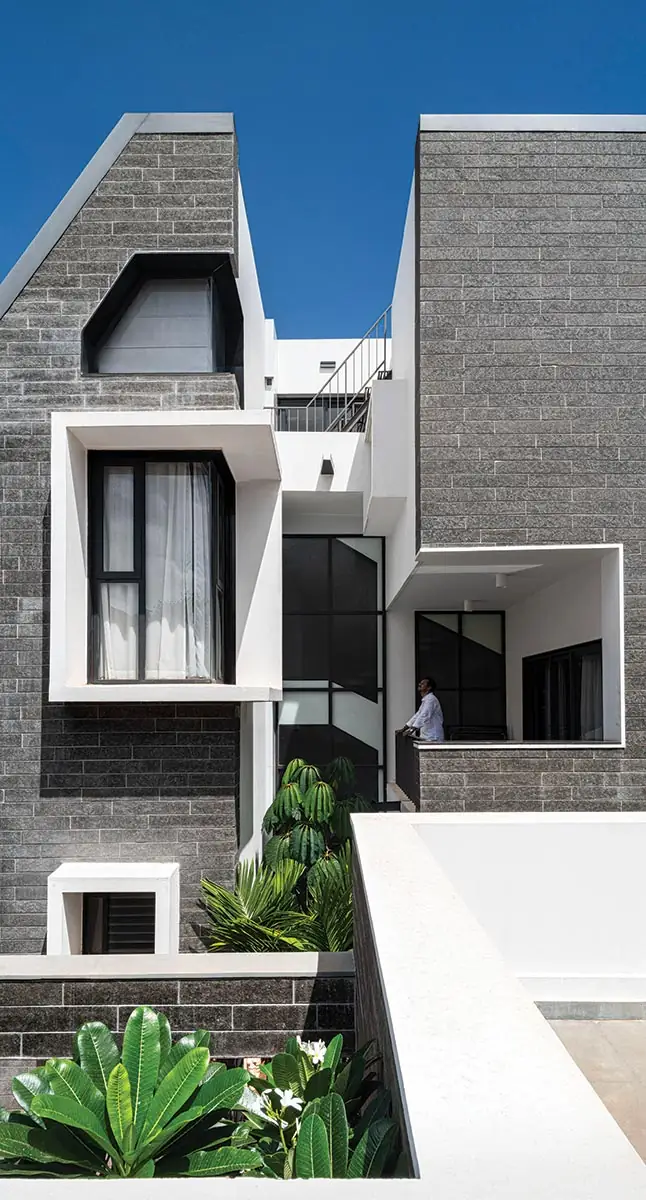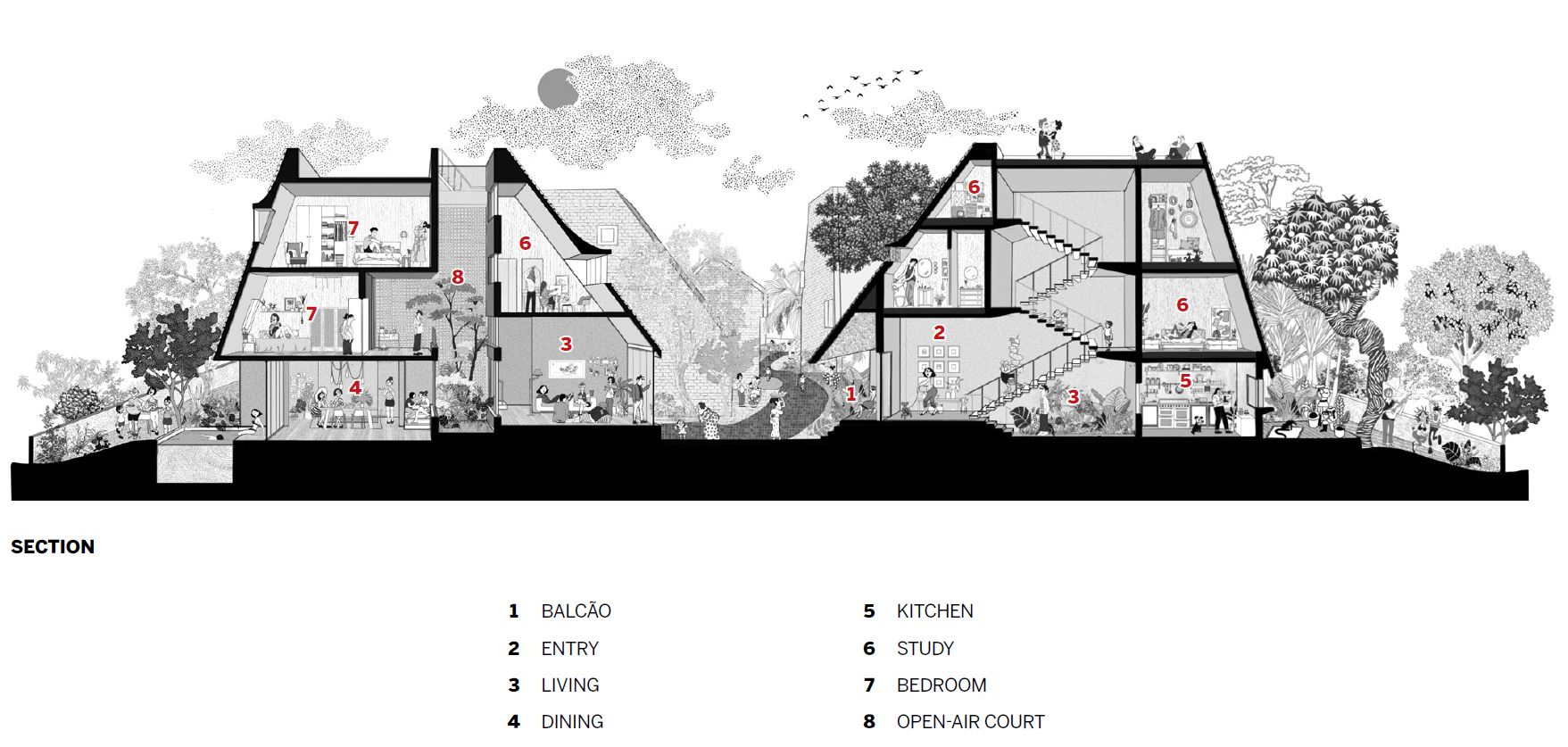House of the Month
Sameep Padora + Associates Plans an Urban Enclave Around a Communal Spine on India’s Western Coast
Anjuna, Goa, India

Architects & Firms
The Indian state of Goa has built a reputation around its white-sand beaches and the promise of laid-back living. Owing to its colonial history as a trading post for faraway Portugal, it’s quite different from most of the rest of the country too. In place of polychromatic temples, pristine white churches and lavish villas abound. Tourists flock here, as do native Indians, in search of susegad—an unbothered and carefree frame of mind.
In recent years, an influx of visitors and new residents has spurred a demand for housing. “The idyllic setting is especially appealing to those trying to get away from city life,” says architect Sameep Padora, founder of Mumbai-based studio sP+a and, since 2023, dean of the faculty of architecture at CEPT University in Ahmedabad. “But the typical situation in Goa is a single-family house on an individual plot—it’s almost suburban,” he adds. In the coastal village of Anjuna, situated near the mouth of the Chapora River, Padora and his team have devised a denser, more neighborly enclave comprising a collection of individual dwellings, for a design-minded developer. “She is trained as an architect,” Padora says of his client, “and, along with her sister and business partner, is really interested in creating places with a sense of community.”

1

2
High-ceilinged interiors open directly to the outdoors or balconies (1 & 2). Photos © Studio Suryan//Dang
Striking the right balance between privacy and sociality meant imbuing the project, Kasu Zama, with a certain urbanism—achieved by packing 14 residences (each ranging from 2,000 to 2,700 square feet), along with a handful of outbuildings, onto a minuscule 1.2-acre site. But what distinguishes the housing development from others in the area is the architects’ considered approach to planning.
Straddling a meandering pathway paved with setts, the residences jog in and out to reveal basalt-faced alley walls with punchy white window surrounds, or lush poufs of fragrant jasmine and heliconia. This central spine, forming a shared social space, urges slowness as residents wander down the curving road on their return home. A uniform architectural expression may persist, but the enclave’s organization resembles something of an intimate, tight-knit village that has grown with time—despite being built in a period of four years, and in stark contrast to orthogonally planned compounds nearby.

3
Terra-cotta roofs terminate at a balcão, a shaded entry porch (3). A small court slices through each of the residences, bringing light deep inside (4).
Photos © Studio Suryan//Dang

4
Adding to the complexity, two different residential models populate the community: a shorter, two-story A-frame type, and a taller, three-story type planned on split levels. With steep roofs dressed in terra-cotta, each features a balcão, a shaded entry porch with seating used to socialize with neighbors—a lingering Lusophone influence embedded in the architectural vernacular. “It’s a threshold that sits outside the house, but also within it, inviting interaction between residents,” Padora says, adding that all the living and dining spaces have been intentionally designed to flow from the street. The split-level abodes also feature quaint three-sided courts, which bring light deep inside and create upper-story outdoor balconies.
At the edges of the enclave, the topography slopes downward. With India’s monsoon season in mind, the architects graded the site to redirect the flow of water, when necessary, to back gardens and pools rather than the communal street. A low perimeter wall of coursed laterite—an iron-rich stone that pairs well with the terra-cotta—ensures some privacy but is more of a boundary-defining feature than an imposing barrier.
Despite catering to a higher-income clientele, Kasu Zama resonates with the same uplifting community-oriented values that permeate much of Padora’s work, from shelters for the homeless to spaces of worship, without ceding an interest in form-making. And now, partnering with the same client, his office will soon break ground on even denser housing for Goa’s middle class.
Click section to enlarge

Credits
Architect:
sP+a — Sameep Padora, Aparna Dhareshwar, Vami Koticha, Sakshi Ghulati, Anisha Malhotra
Architect of Record:
Paresh Gaitonde
Engineers:
Meptek Consultants (m/e/p);
R & J Structural Consultants (structural)
Consultants:
Studio Taan (interiors); The Concise Desines (landscape)
General Contractor:
Abraham & Thomas Engineers
Client:
Kasu Developers
Size:
34,400 square feet
Cost:
Withheld
Completion Date:
April 2022
Sources
Roofing:
ASIC Roofing Solutions
Windows:
Ornate Windows
Hardware:
Häfele




